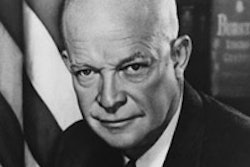A short story penned more than a century ago by Mark Twain but never published until last year offers such a vivid description of his experiences with early periodontal therapy that it could almost serve as a case report on periodontics, according to an article in the Journal of Dental Research (JDR, April 16, 2010).
"Happy Memories of the Dental Chair" can be seen as "a portal into 19th century dentistry," according to William Maloney, D.D.S., author of the JDR paper. It provides insight into the thoughts and practices of two legendary figures in dentistry: Dr. John Mankey Riggs, the father of periodontics, and Dr. Horace Wells, a pioneer in the field of anesthesia.
The story takes place in Hartford, CT, where Twain actually lived and where Dr. Riggs and Dr. Wells both practiced. In fact, Dr. Riggs was Twain's personal dentist.
Using his trademark wit, Twain describes his experiences with Dr. Riggs, who diagnosed and treated the author's "dental disease" -- which turned out to be periodontitis, although at that time it was called Rigg's disease, according to Dr. Maloney.
"The unnamed dentist (describes) the typical periodontal patient," Dr. Maloney wrote. "The dentist does this with his great 'gift of talk,' which, Twain offers, all dentists possess inherently."
He then goes on to describe the process of periodontal disease to Twain, with much scientific detail and an "uncanny" futuristic knowledge of the connection that we now know exists between periodontal health and systemic health, Dr. Maloney noted.
"This is the earliest reference ever to the oral-systemic health link, dating back to the 1880s," Dr. Maloney told DrBicuspid.com.
The story also provides insight into the origins of anesthesia, he added.
"Dr. Riggs relates the story of the night his mentor, Dr. Wells, was inspired with the thought that nitrous oxide could be used as anesthesia," he said. "The next day Dr. Riggs became the first person to operate using anesthesia while extracting one of Dr. Wells' third molars."
Dr. Maloney has published other papers on historical figures and literature and their relationship to dentistry, including an analysis of the true cause of Babe Ruth's death.



















